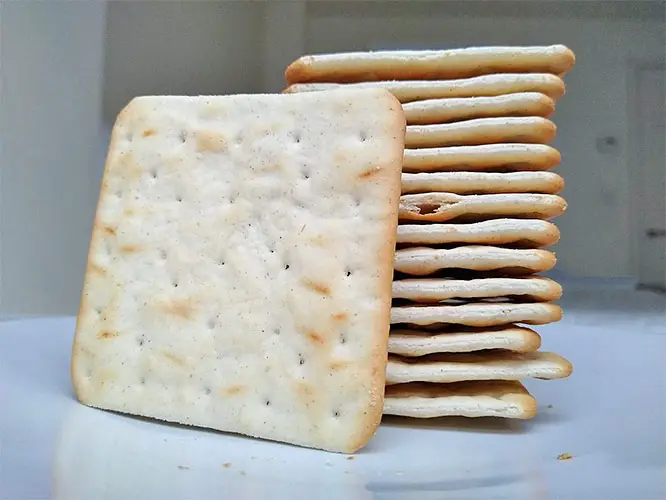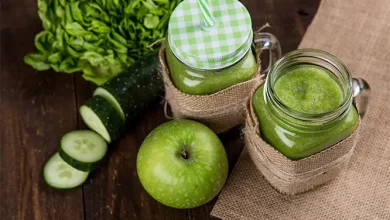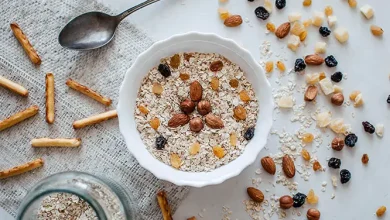Do Cream Crackers Offer Health Benefits? Analyzing Their Nutritional Content

Understanding Cream Crackers: A Nutritional Overview
In the snack world, cream crackers often spark a debate about their health benefits. As a parent, finding snacks that are both tasty and nutritious for my child is a priority. Therefore, I took a closer look at cream crackers to see if they make the cut. What I found may surprise you, especially when deciding between bread and crackers at the grocery store. Let’s dive into what cream crackers are really made of.
Ingredients of Cream Crackers
Cream crackers have a simple list of ingredients: Wheat Flour, Calcium, Iron, Niacin, Thiamin, Vegetable Oil (Palm), Salt, Raising Agent (Sodium Bicarbonate), and Yeast.
The use of palm oil might be a concern for those aware of its environmental impact, such as deforestation and wildlife disruption. These crackers are free from added sugar and eggs. Made mostly from white processed flour, they offer limited nutritional value, but we’ll break down the specifics next.
What’s in a Name?
You might wonder why they’re called cream crackers when there’s no cream involved. The name comes not from any dairy content but from the “creaming” method used in their production.
Nutritional Details of Cream Crackers
Taking Jacobs Cream Crackers as an example, which is typical for this snack:
Key Nutritional Information
Per 8g cracker from Jacobs:
- Calories: 35
- Fat: 1.1g
- Carbohydrates: 5.4g
- Fiber: 0.2g
- Protein: 0.8g
- Salt: 0.1g
Calories and Nutritional Impact
Each cracker has 35 calories, and eating four would total 140 calories. For comparison, a slice of white bread typically has 80-100 calories. Adding toppings like cheese or butter will increase the calorie count by about 100 for cheese and 36 for a teaspoon of butter.
With 21.6g of carbs from four crackers, they’re not suitable for low-carb diets. The low fiber content of 0.2g per cracker also means they’re not great for increasing fiber intake.
Each cracker contains a minimal 0.1g of salt, which is good for those watching their sodium intake.
Are Cream Crackers a Healthy Choice?
The verdict on cream crackers is mixed. They’re low in calories and free of added sugars, which are positives. However, they lack significant amounts of fiber and protein.
They’re moderately high in carbs and low in fiber, so they may not be the best choice for those looking to increase their fiber intake. The inclusion of palm oil also might be a concern for some.
Personally, I find cream crackers to be a straightforward, mildly salty snack. They aren’t particularly filling on their own, so pairing them with other foods is common.
Overall, while they’re not packed with nutrients, they’re not the worst snack choice either. Eating them in moderation as part of a balanced diet is a practical approach. If you’re looking for a snack with more nutritional benefits, there are better options available.
FAQs About Cream Crackers
Here’s what you need to know about cream crackers:
- Cholesterol: They’re not high in fats that raise cholesterol, nor do they help lower it.
- Pregnancy: A reasonable option due to their low sugar and simple ingredients, but they shouldn’t replace more nutritious snacks.
- Babies and Toddlers: Beneficial because of the low sugar content, but they should only be a small part of a child’s diet due to their low nutrient density.
- Comparison with Saltines: Similar yet different in saltiness, texture, ingredients, and nutrition.
- Weight Loss: Low in calories but also low in nutrients and satiety, moderation is crucial.
- Diabetes: Important to eat in moderation due to the moderate carb content.
- Low FODMAP Diet: Contains wheat, which might not suit a low FODMAP diet.
- Cream Crackers vs. Bread: Depends on your nutritional needs; crackers have fewer calories, bread has more fiber.
- Constipation: Low fiber content means they might contribute to constipation if not consumed with sufficient water.
- Heartburn and Gas: Typically not linked, but individual reactions can vary.




